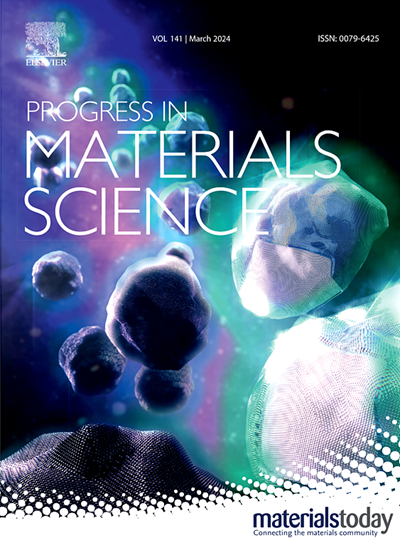A materials science approach to extracellular matrices
IF 33.6
1区 材料科学
Q1 MATERIALS SCIENCE, MULTIDISCIPLINARY
引用次数: 0
Abstract
Extracellular matrices (ECMs) are foundational to all biological systems and naturally evolved as an intersection between living systems and active materials. Despite extensive study, research on ECMs often overlooks their structural material complexity and systemic roles. This Perspective argues for a holistic examination of ECMs from a materials science viewpoint, emphasizing their highly variable compositions, multiscale organizations, dynamic changes of mechanical properties, and fluid interactions. By transcending taxonomic and environmental boundaries, we aim to reveal underlying principles governing architectures, functions and adaptations of ECMs, with a focus on animal, plant and biofilm ECMs. Highlighting the role of water in ECM composition and function, and road-mapping the technical challenges in characterizing these complex materials, we propose an interdisciplinary framework to advance our understanding and application of ECMs across multiple scientific fields. Key focus areas include specimen preparation, multiscale analysis, and multimethod approaches. The optimization of specimen preparation first enables us meeting both biological and experimental conditions. The use of techniques that bridge the multiscale nature of ECMs is next, followed by integration of multiple techniques that are both position- and time-resolved, including structural and spectroscopic imaging. Such a coordinated approach promises not only to enrich our knowledge of biological systems but also to encourage the development of innovative bioinspired materials, with transformative implications across environmental science, health, and biotechnology.
细胞外基质的材料科学方法
细胞外基质(ECM)是所有生物系统的基础,是生物系统与活性材料之间的自然进化。尽管对 ECMs 进行了广泛的研究,但对其结构材料的复杂性和系统作用的研究往往被忽视。本视角主张从材料科学的角度对 ECMs 进行整体研究,强调其高度可变的组成、多尺度组织、机械特性的动态变化以及流体相互作用。通过跨越分类学和环境的界限,我们旨在揭示支配 ECMs 结构、功能和适应性的基本原理,重点关注动物、植物和生物膜 ECM。我们强调了水在 ECM 组成和功能中的作用,并描绘了表征这些复杂材料所面临的技术挑战,提出了一个跨学科框架,以促进我们对 ECM 的理解和在多个科学领域的应用。重点领域包括标本制备、多尺度分析和多方法方法。优化标本制备首先要满足生物和实验条件。其次是利用技术来弥补 ECM 的多尺度特性,然后是整合多种位置和时间分辨技术,包括结构和光谱成像技术。这种协调的方法不仅有望丰富我们对生物系统的认识,还能促进创新生物启发材料的开发,对环境科学、健康和生物技术产生变革性影响。
本文章由计算机程序翻译,如有差异,请以英文原文为准。
求助全文
约1分钟内获得全文
求助全文
来源期刊

Progress in Materials Science
工程技术-材料科学:综合
CiteScore
59.60
自引率
0.80%
发文量
101
审稿时长
11.4 months
期刊介绍:
Progress in Materials Science is a journal that publishes authoritative and critical reviews of recent advances in the science of materials. The focus of the journal is on the fundamental aspects of materials science, particularly those concerning microstructure and nanostructure and their relationship to properties. Emphasis is also placed on the thermodynamics, kinetics, mechanisms, and modeling of processes within materials, as well as the understanding of material properties in engineering and other applications.
The journal welcomes reviews from authors who are active leaders in the field of materials science and have a strong scientific track record. Materials of interest include metallic, ceramic, polymeric, biological, medical, and composite materials in all forms.
Manuscripts submitted to Progress in Materials Science are generally longer than those found in other research journals. While the focus is on invited reviews, interested authors may submit a proposal for consideration. Non-invited manuscripts are required to be preceded by the submission of a proposal. Authors publishing in Progress in Materials Science have the option to publish their research via subscription or open access. Open access publication requires the author or research funder to meet a publication fee (APC).
Abstracting and indexing services for Progress in Materials Science include Current Contents, Science Citation Index Expanded, Materials Science Citation Index, Chemical Abstracts, Engineering Index, INSPEC, and Scopus.
 求助内容:
求助内容: 应助结果提醒方式:
应助结果提醒方式:


